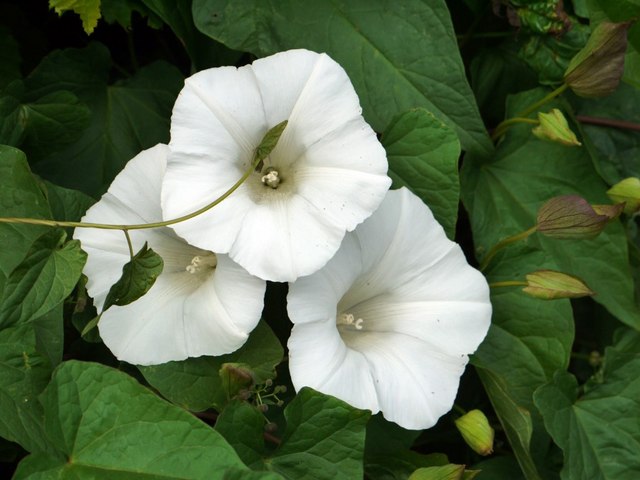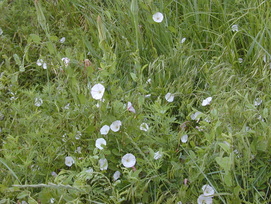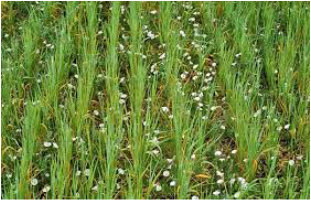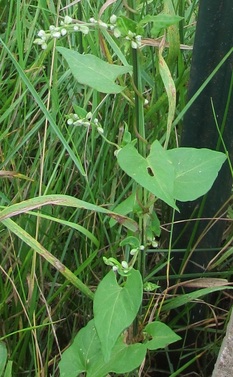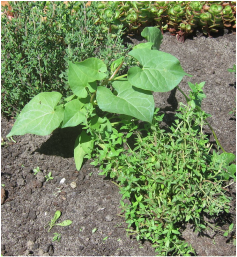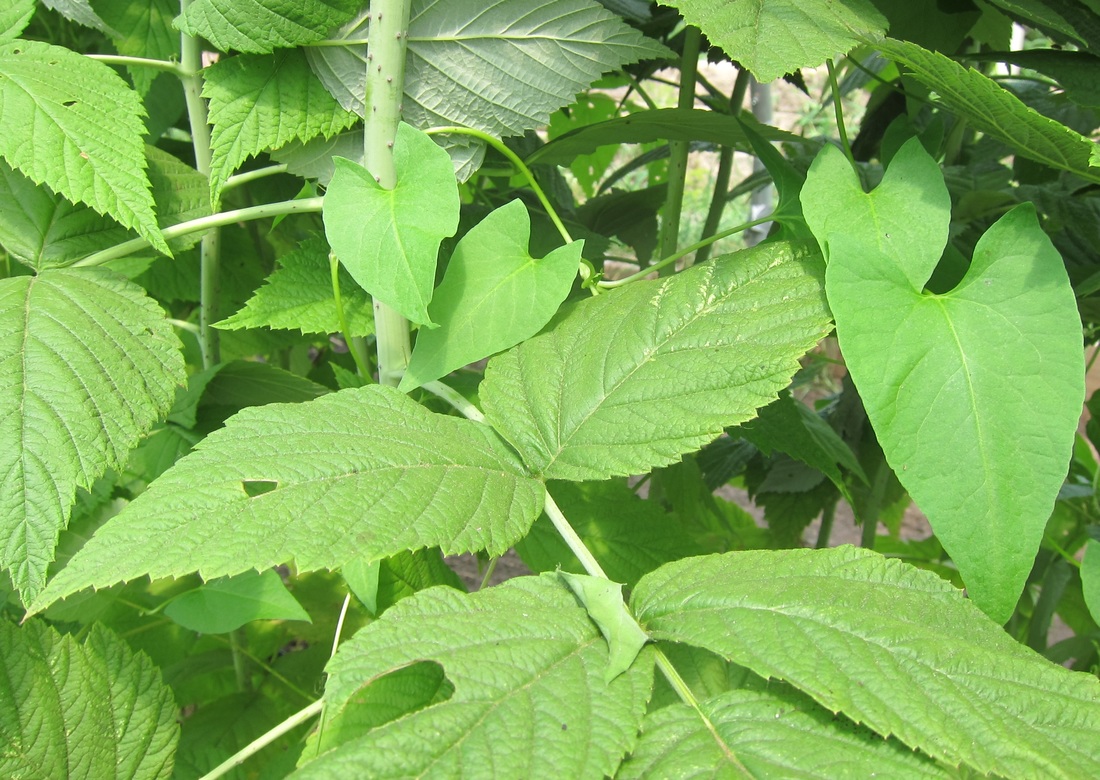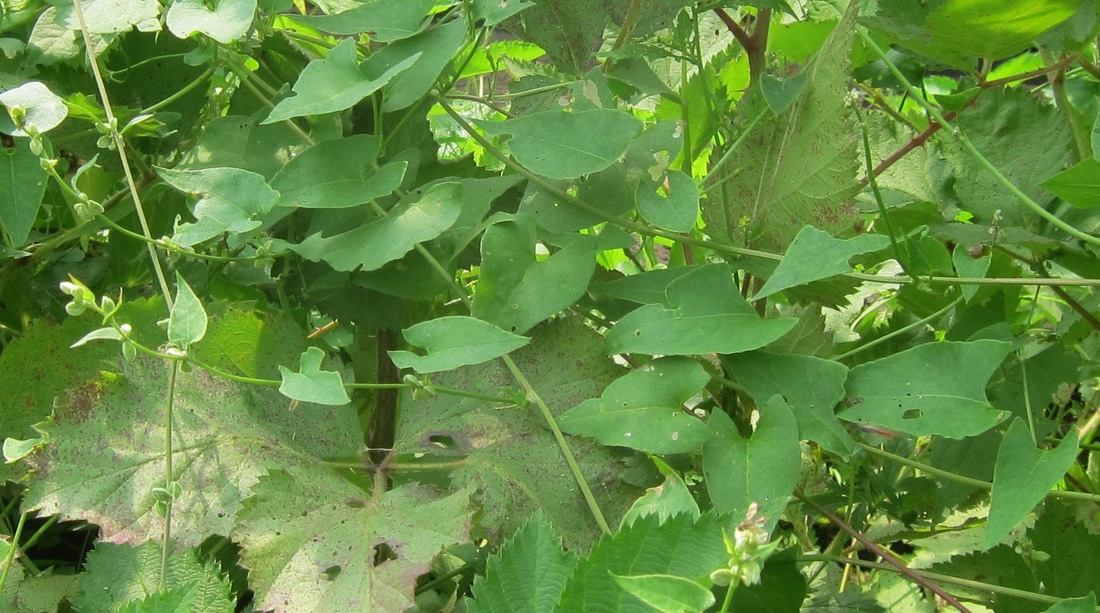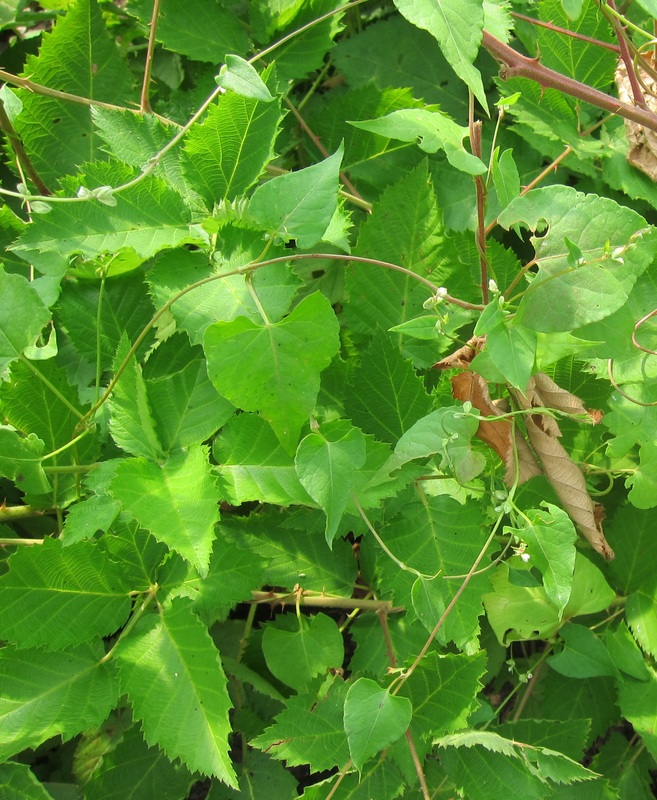|
Bindweed, Convolvulus arvensis, is a I wish I’d investigated this weed 15 years ago when we moved on to the property. This pretty little vine has smooth, heart-shaped leaves and trumpet-shaped, light pink to white flowers that look like morning glories. They close each afternoon and reopen the following day. It’s mildly annoying, but so pretty and pulls so easily that I never really minded it. But after reading about it this week I decided that’s like saying Typhoid Mary makes great chicken soup.
According to Andy Hulting, a weed specialist at Oregon State University, this pretty little weed is considered to be one of the most noxious weeds in the world! Once it is established it is nearly impossible to completely eradicate it. |
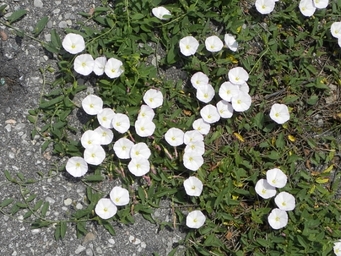
Bindweed grows in all kinds of conditions from full sun to full shade and it is drought-tolerant. It will out compete native plants and new plantings. It was introduced from Europe to Virginia in 1739 and even before 1900 the U.S. Department of Agriculture recognized the weed as a “national menace.”
It will produce flowers throughout the entire growing season but you never want to see those flowers. Once they go to seed, they go to town. A pure stand of field bindweed can produce 22 million seeds (about ¾ ton) per acre. Seeds are mature about 3 weeks after the flowers bloom but have been known to germinate as quickly as 10 days after the flowers open. On the other extreme, the seeds can lie dormant for more than 20 years and still germinate; the record documented was a seed that survived to germinate 50 years later. Seedlings are quickly established developing a deep taproot about six weeks after emergence. And that quickly established, deep taproot presents another problem...
It will produce flowers throughout the entire growing season but you never want to see those flowers. Once they go to seed, they go to town. A pure stand of field bindweed can produce 22 million seeds (about ¾ ton) per acre. Seeds are mature about 3 weeks after the flowers bloom but have been known to germinate as quickly as 10 days after the flowers open. On the other extreme, the seeds can lie dormant for more than 20 years and still germinate; the record documented was a seed that survived to germinate 50 years later. Seedlings are quickly established developing a deep taproot about six weeks after emergence. And that quickly established, deep taproot presents another problem...
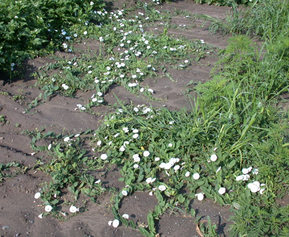
Bindweed also spreads by rhizomes, nodes along the roots that send up shoots creating new plants above ground. Anytime the root is cut or broken the pieces can start a new plant. Buds on root segments as short as one inch will reproduce. This reproductive budding from the roots will begin as early as six weeks after the seedling first emerges from the ground. Bindweed roots have been known to penetrate 20 feet deep making it impossible to pull out all the roots. Since the broken pieces of root each begin a new plant hoeing or tilling these plants actually increases the number of plants. Their roots increase in vigor are more likely to produce more plants the older and larger it gets.
This weed seems overwhelming. It will choke out desirable plants and tangle up farm equipment. I have a horrible time with it in the rows of raspberries. I don’t usually see it until it is quite high on the canes and very tangled in the brambles.
On the bright side it does have pretty flowers that smell good and, in a pinch, the stems could be used as a twine when tying up plants…but I don’t recommend it. Good luck!
On the bright side it does have pretty flowers that smell good and, in a pinch, the stems could be used as a twine when tying up plants…but I don’t recommend it. Good luck!
